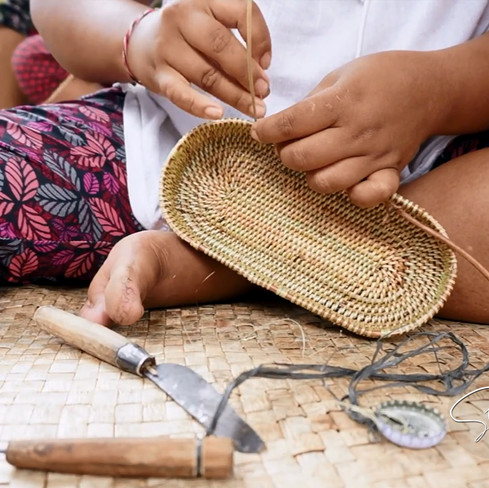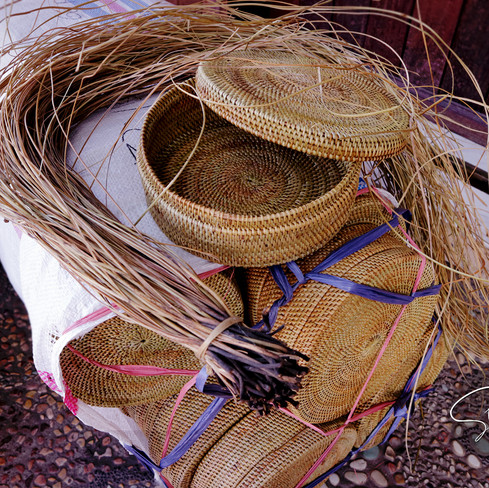RATTAN BAGS & ATA BAGS | HOW IT'S MADE
- SHAKA
- Jun 8, 2018
- 3 min read
Updated: May 16, 2024
Bali bag? Basket bag? Rattan bag? Wicker bag? What do people call these things?
Regardless of what they’re called, they all share one thing in common:
Wait. Why it's called Ata? What is Ata anyway?
Ata or Paku Hata (Indonesian language) or Ate (Balinese language); it is a type of fern with latin name Lygodium Circinnatum, that Bali natives already used for making ropes and wicker baskets since a long time ago.
The Lygodium family are fast-growing, to the point that in parts of the United States such as Florida and Alabama, relatives of the Ata, the Japanese climbing fern (Lygodium Japonicum) and Old World climbing fern (Lygodium Microphyllum), has been classified as a problematic invasive species that displaces other native flora.
The Balinese people have long used the leaf ribs and stalk of the Ata plant as a source for making ropes, but since the development of synthetic materials they now primarily use the material to weave baskets and other wares. Demand for the resource, in fact, has been so high that other regions in Indonesia such as parts of Flores, Borneo, and Java have been able to export Ata vines to Bali so that the skilled artisans here have a steady supply of raw material for them to ply their craft.
THE MAKING PROCESS OF ATA BAGS
The process of making the bags is very time-consuming.
It takes more than one village to make these beautiful handcrafted Ata bags. Each person may be skilled in making specific pieces. For example, some people may specialize in making rectangular sheets, some others may excel at making ovals and end pieces, yet others are really good at making buttons and ribbon fasteners, and so forth.
The Ata vines have to be properly conditioned, then they are woven into shape, a process that could take one skilled artisan 3 days until a week to make just one bag.
After the weaving process is finished, the bags' body will be boiled to clean up the sap and resin that still contained in Ata stalks. Also to make sure they are perfectly disinfected of any mold or fungus that may have been on the plant material.
The product is then dried by direct sunlight. It usually takes 2 or 3 days to make the bag's body completely dry.
After the bags have dried, they are then cured and smoked in an oven to condition and strengthen them, as well as imparting that lovely brown patina finish. This is also why the bags may have some of that lingering smokey aroma that I happen to find very pleasant. (It’s okay if you don’t, just leave the bag to air out for a few days. The scent will eventually fade.)
For the finishing touch, the genuine leather strap and cloth lining are sewed and attached to the bag.

The inside of each bag is lined with a traditional Indonesian Batik fabric.
Indonesian Batik has been inscribed by UNESCO on the list of the cultural and intangible heritage of humanity. Each pattern is different in terms of colors or designs giving each model a unique character.

And there we have it. The Ata & Rattan Bags.

In the end, the fruits of their effort are very well worth the long, laborious process. Each bag is unique, stylish, fun to use, and are very sturdy and well-made. We hope that this post has given you some more insight into our products, and also convey to you the extreme pride we have in bringing them to you.
The whole process from start to finish takes a very long time. Entire families and entire villagers contribute to the manufacture of these bags which are now exported worldwide. But the product of these hardworking craftspeople are very well worth the effort, don’t you think?
If you’d like more information, products line sheet, wholesale price list, shipment, or any inquiries, feel free to contact us and you can see our products here.

























Comments